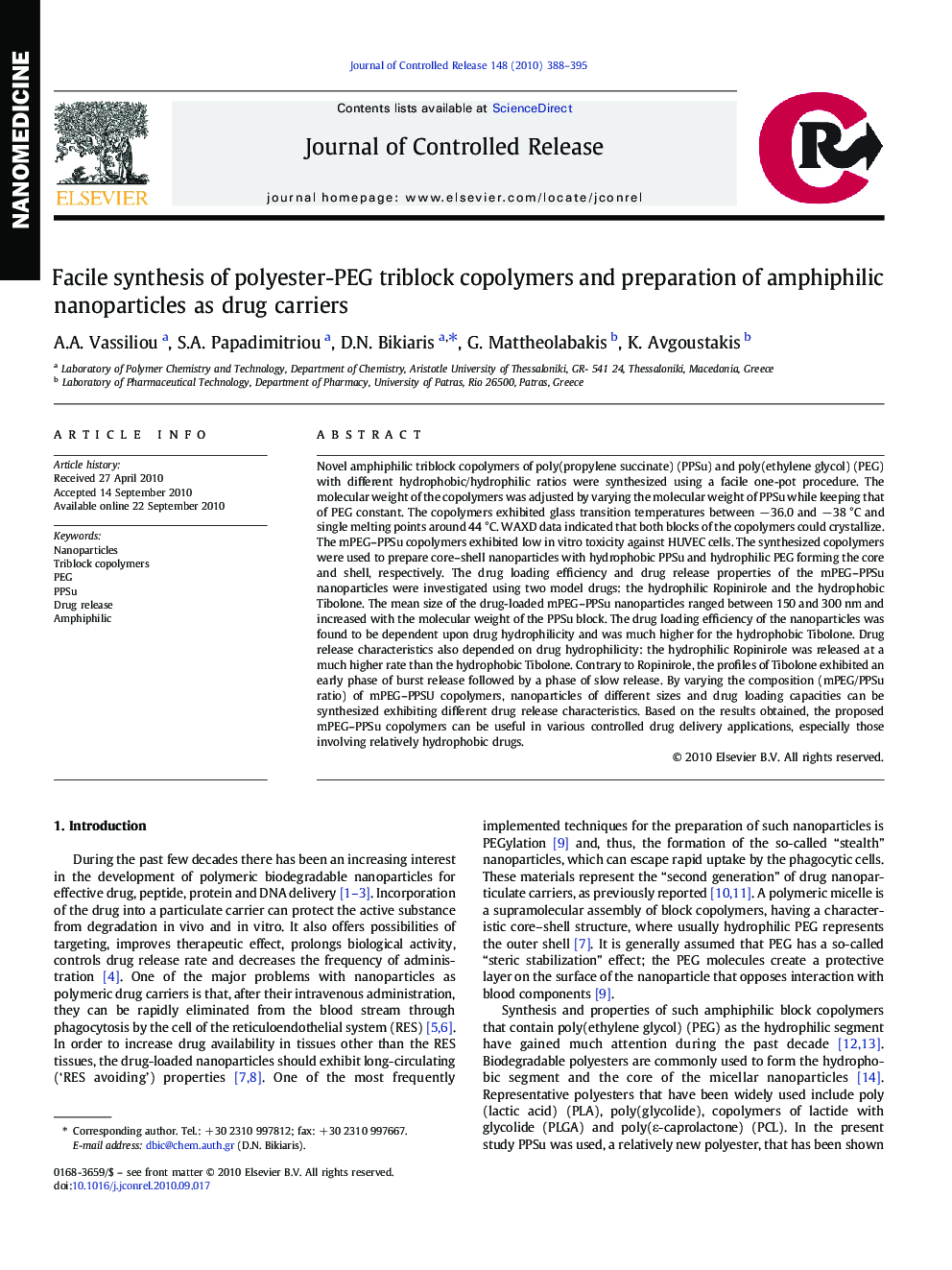| کد مقاله | کد نشریه | سال انتشار | مقاله انگلیسی | نسخه تمام متن |
|---|---|---|---|---|
| 1425635 | 986773 | 2010 | 8 صفحه PDF | دانلود رایگان |

Novel amphiphilic triblock copolymers of poly(propylene succinate) (PPSu) and poly(ethylene glycol) (PEG) with different hydrophobic/hydrophilic ratios were synthesized using a facile one-pot procedure. The molecular weight of the copolymers was adjusted by varying the molecular weight of PPSu while keeping that of PEG constant. The copolymers exhibited glass transition temperatures between − 36.0 and − 38 °C and single melting points around 44 °C. WAXD data indicated that both blocks of the copolymers could crystallize. The mPEG–PPSu copolymers exhibited low in vitro toxicity against HUVEC cells. The synthesized copolymers were used to prepare core–shell nanoparticles with hydrophobic PPSu and hydrophilic PEG forming the core and shell, respectively. The drug loading efficiency and drug release properties of the mPEG–PPSu nanoparticles were investigated using two model drugs: the hydrophilic Ropinirole and the hydrophobic Tibolone. The mean size of the drug-loaded mPEG–PPSu nanoparticles ranged between 150 and 300 nm and increased with the molecular weight of the PPSu block. The drug loading efficiency of the nanoparticles was found to be dependent upon drug hydrophilicity and was much higher for the hydrophobic Tibolone. Drug release characteristics also depended on drug hydrophilicity: the hydrophilic Ropinirole was released at a much higher rate than the hydrophobic Tibolone. Contrary to Ropinirole, the profiles of Tibolone exhibited an early phase of burst release followed by a phase of slow release. By varying the composition (mPEG/PPSu ratio) of mPEG–PPSU copolymers, nanoparticles of different sizes and drug loading capacities can be synthesized exhibiting different drug release characteristics. Based on the results obtained, the proposed mPEG–PPSu copolymers can be useful in various controlled drug delivery applications, especially those involving relatively hydrophobic drugs.
Graphical AbstractBased on the release data obtained with Ropinirole and Tibolone drugs, it could be concluded that the distribution of the drug content into mPEG–PPSu–mPEG nanoparticles is influenced by the hydrophilicity of the drug and this distribution affects in turn the release behavior.Figure optionsDownload as PowerPoint slide
Journal: Journal of Controlled Release - Volume 148, Issue 3, 20 December 2010, Pages 388–395